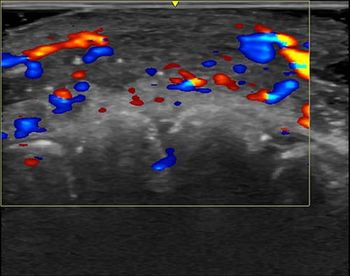
Hogan ascends at GE Healthcare with departure of William Castell
Expect few changes in the running of GE Healthcare, despite a change in leadership
Expect few changes in the running of GE Healthcare, despite a change in leadership.
Joe Hogan has taken over as president and CEO of the multinational company, replacing William Castell, who held the reins of GE Healthcare for a little more than a year in the wake of the merger of GE Medical Systems and Amersham Health. Hogan, the former president and CEO of GE Healthcare Technologies, known as GE Medical Systems prior to the merger, stepped into Castell's shoes July 6.
Hogan, a chief architect of the Amersham merger and long-time advocate of personalized healthcare, views his ascendancy as portending no dramatic changes for himself or the business. He will continue promoting the corporate vision of personalized medicine, which he has advocated since taking over GE Medical Systems in 1998.
Hogan will not install a successor at GE Healthcare Technologies. Instead he will run the Milwaukee-based business unit from his new digs in London. Reinaldo Garcia, current president of the unit's Global Diagnostic Imaging, will manage the day-to-day affairs of the imaging business. Garcia will report to Hogan, as will Peter Loescher, who has served as president and CEO of GE Healthcare Bio-Sciences since April 2004.
Time management - choosing when, where, and how much time to spend on different duties - will be his biggest challenge, Hogan said. But putting his stamp on the GE vision of personalized healthcare may be the most rewarding.
Hogan sees the biosciences business as the key to moving imaging diagnostics into personalized medicine, making it part of the drug discovery and drug delivery side of healthcare. For him personally, this will require a deep understanding of the biosciences business and its makeup.
"That's both a challenge and a joy, because I love the science, but I haven't had a huge amount of exposure to it," he said.
The adoption of personalized medicine will hinge on increasing the sensitivity and specificity of medical diagnostics so as to identify disease before the onset of physical symptoms. This may allow preventive care that will keep disease at bay.
The development of such technologies will be expensive and difficult, not only in research and development but in navigating the regulatory process. Companies developing products for personalized medicine will have to demonstrate their value. This will require clinical tests, which for the most part the industry has been able to avoid so far.
The FDA's 510(k) process, under which most imaging equipment is cleared for market, is oriented toward safety rather than efficacy. "Substantial equivalence" to devices already on the market is its cornerstone. Technologies aimed at changing the practice of medicine from therapy to prevention will have no such predecessors. Consequently, they will not qualify for 510(k) review, which means their developers will have to meet the burden of proving their clinical value as part of the PMA or premarket approval process.
This will bring up challenges and opportunities, Hogan said, that might be met by a sense of cooperation among vendors rather than competition.
"There might be areas where vendors should work together," Hogan said. "We may have to ask how do we show that (this class of) technology is effective."
Newsletter
Stay at the forefront of radiology with the Diagnostic Imaging newsletter, delivering the latest news, clinical insights, and imaging advancements for today’s radiologists.




























